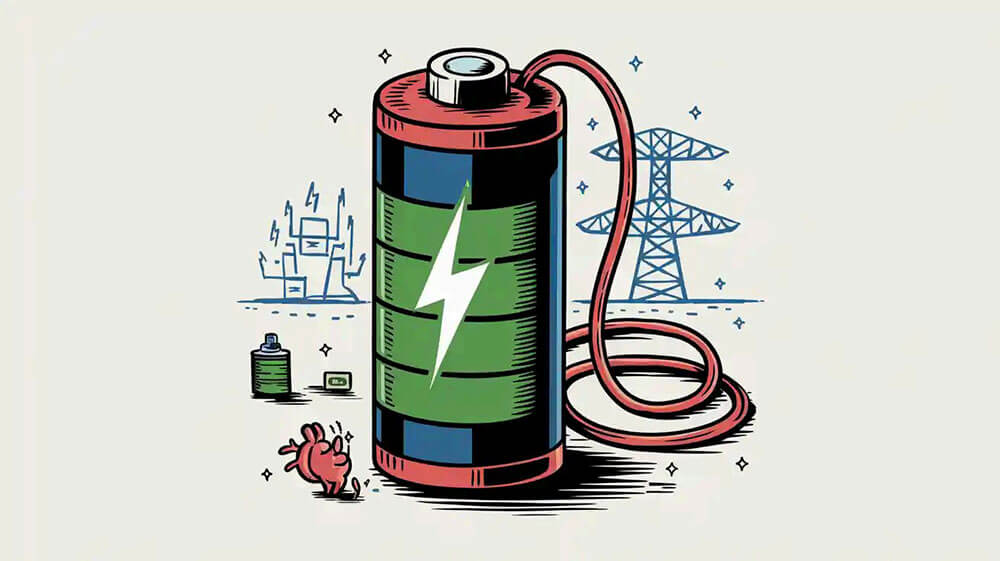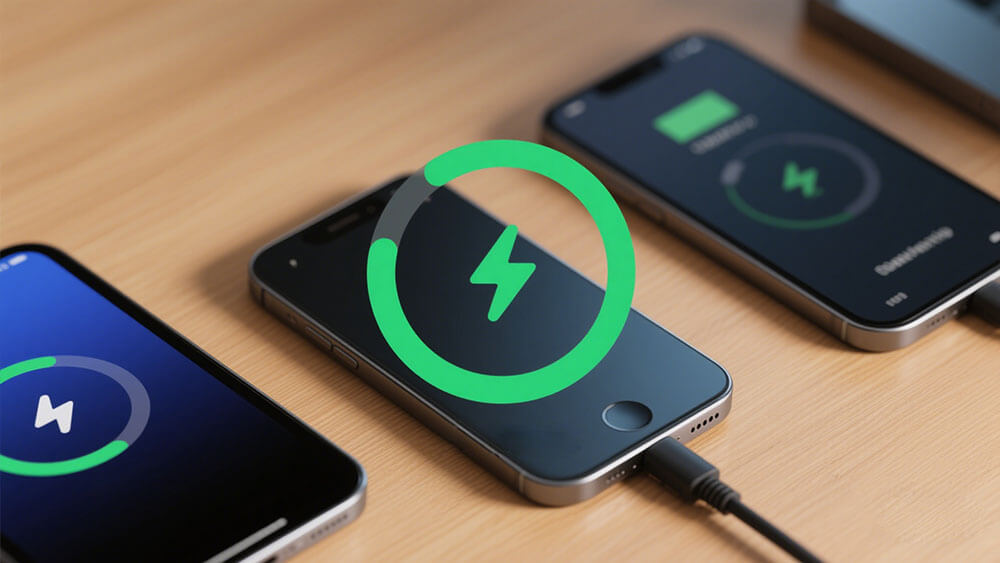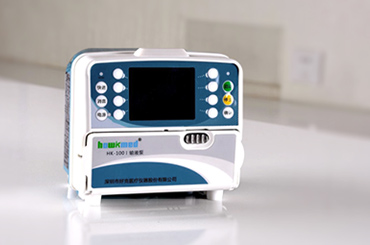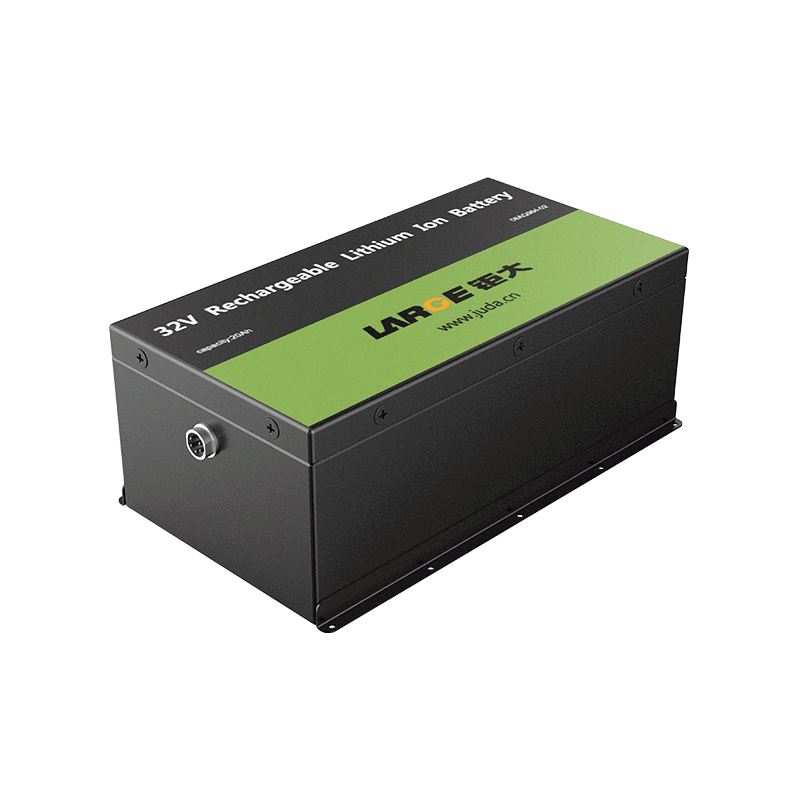-
Key Takeaways
-
Part 1: Understanding Lithium Battery Float Charging+
- 1.1 What Does Float Charging Mean for Lithium Batteries?
- 1.2 Why Is Float Charging Important for Lithium Batteries?
-
Part 2: Technical Insights into Float Charging+
- 2.1 How Float Charging Works for Lithium Batteries
- 2.2 Risks of Float Charging Lithium Batteries
- 2.3 When to Avoid Float Charging
-
Part 3: Float Voltage Requirements for Lithium Batteries+
- 3.1 Float Voltage Ranges for Different Lithium Batteries
- 3.2 Core Principles for Float Voltage Setting
- 3.3 Float Voltage Precision Requirements and System Design
- 3.4 When to Avoid Float Charging
-
FAQ+
- 1. How do you determine the correct float voltage for lithium battery packs?
- 2. Can float charging damage lithium batteries over time?
- 3. Is float charging suitable for all lithium battery chemistries?
What Does Float Charging Mean for Lithium Batteries?
APR 24, 2025 Pageview:12

Float charging is a maintenance charging technique used to keep a battery at or near full capacity after it has been fully charged. While commonly associated with lead-acid batteries, its application to lithium batteries is nuanced and requires careful implementation.
Key Takeaways
Float charging keeps lithium batteries at the best charge level. It stops overcharging and helps the battery last longer.
The right float voltage is very important. It should be a bit lower than the highest charging voltage to stay safe and work well.
Using good float charging habits, like picking the right charger and controlling heat, can make batteries work better and last longer.

Part 1: Understanding lithium battery Float Charging
1.1 What Does Float Charging Mean for Lithium Batteries?
Float charging is a specialized method designed to maintain lithium batteries at their optimal charge level without causing overcharging or stress. This technique involves applying a constant voltage, known as the float voltage, which is slightly lower than the maximum charging voltage. By doing so, it ensures the battery remains fully charged while protecting its internal components from damage.
Definition: A low-voltage, low-current charging phase that compensates for self-discharge and maintains a battery’s state of charge (SOC) at ~95–100%.
Goal: Ensure batteries are always ready for use in critical systems (e.g., emergency backups) without frequent recharging cycles.
Post-Full Charge Transition:
After reaching 100% SOC, the charger switches from constant current (CC) to constant voltage (CV) mode.
The voltage is slightly reduced (e.g., 3.45–3.5V/cell for LiFePO₄, 3.8–3.9V/cell for NMC) to avoid overcharging.
Micro-Current Supply:
A tiny current (e.g., C/100 to C/50, where C = battery capacity) offsets self-discharge (~1–3% per month).
1.2 Why Is Float Charging Important for Lithium Batteries?
Float charging for lithium batteries is less critical than for lead-acid batteries, but it still plays a role in specific applications where maintaining a near-full state of charge (SOC) is essential. Its importance depends on balancing benefits and risks, as improper use can harm lithium batteries.
Compensating Self-Discharge in Critical Systems
Low but non-zero self-discharge: Lithium batteries self-discharge at ~1–3% per month. In systems requiring instant readiness, even minor capacity loss could compromise reliability. Float charging ensures the battery remains at 95–100% SOC.
Stability in Intermittent Energy Systems
Solar/wind storage: Renewable energy systems experience irregular charging cycles. Float charging helps stabilize SOC during periods of low generation, avoiding deep discharges that degrade lithium batteries.
Prolonging Operational Readiness
Military/medical devices: Equipment used sporadically but requiring full power on demand (e.g., defibrillators, field sensors) benefits from float charging to maintain readiness without frequent manual recharging.

Part 2: Technical Insights into Float Charging
2.1 How Float Charging Works for Lithium Batteries
Float charging operates by maintaining a low current and voltage once the lithium battery reaches full charge. This process ensures the battery remains at its optimal state of charge without overcharging or over-discharging. By applying a constant float voltage, the battery's internal components are protected from stress, which enhances its lifespan. For lithium-ion batteries, this method is particularly effective in applications requiring continuous power, such as industrial systems or energy storage setups.
However, keeping a lithium-ion battery at full voltage for extended periods can lead to degradation. Studies highlight that prolonged exposure to peak charge may cause metallic lithium plating, compromising safety and performance. To mitigate this, float charging minimizes the time the battery remains at maximum charge, ensuring both safety and efficiency.
2.2 Risks of Float Charging Lithium Batteries
Accelerated Degradation:
Prolonged 100% SOC stresses the anode, thickens the SEI (solid-electrolyte interphase) layer, and reduces cycle life. Continuous float charging may cause ~10–20% annual capacity loss.
Safety Hazards:
Overvoltage or high temperatures can trigger lithium dendrites, leading to internal shorts or thermal runaway.
Unnecessary for Most Use Cases:
Consumer devices (phones, laptops) use "charge termination" to avoid float charging, as self-discharge is negligible.
2.3 When to Avoid Float Charging
Float voltage is a critical parameter for maintaining lithium batteries in a fully charged state. It must be precisely set based on the battery chemistry, temperature, and application. Improper float voltage accelerates aging or poses safety risks.

Part 3: Float Voltage Requirements for Lithium Batteries
3.1 Float Voltage Ranges for Different Lithium Batteries
Battery Type | Nominal Voltage (Per Cell) | Float Voltage (Per Cell) | Notes |
|---|---|---|---|
LiFePO₄ (Lithium Iron Phosphate) | 3.2V | 3.35–3.45V | High chemical stability and overcharge tolerance; float voltage close to nominal. |
NMC/NCA (Lithium Nickel Manganese Cobalt Oxide) | 3.6–3.7V | 3.8–3.9V | Voltage-sensitive; must stay well below full charge voltage (4.2V). |
LTO (Lithium Titanate) | 2.4V | 2.6–2.7V | Strong overcharge tolerance; float voltage slightly above nominal. |
3.2 Core Principles for Float Voltage Setting
Avoid Overcharging:
Float voltage must be lower than the full charge cutoff voltage (e.g., ≤3.9V for NMC with a 4.2V cutoff).
Excessive voltage causes lithium-ion over-embedding in the anode, electrolyte decomposition, and dendrite growth.
Compensate for Self-Discharge:
Float voltage should slightly exceed the battery’s open-circuit voltage (OCV) to offset self-discharge (e.g., 3.4V for LiFePO₄ with an OCV of 3.2–3.3V).
Temperature Compensation:
High Temperatures: Reduce float voltage by 3–5mV per 1°C increase to prevent thermal runaway.
Low Temperatures: Avoid float charging below 0°C due to heightened lithium plating risks.
3.3 Float Voltage Precision Requirements and System Design
Precision Requirements
Tolerance: ±0.05V (lead-acid batteries allow ±0.1V).
Reason: Lithium batteries are sensitive to overvoltage. Exceeding limits may cause:
LiFePO₄: SEI layer thickening and capacity fade.
NMC/NCA: Lithium metal plating, leading to short circuits or thermal runaway.
System Design
Role of BMS (Battery Management System):
Monitors cell voltage in real time, dynamically adjusts float voltage, and prevents voltage imbalance.
Disables float charging during overheating or overvoltage.
Balancing Multi-Cell Packs:
Ensure uniform cell voltage in series-connected packs (e.g., 12V LiFePO₄ packs require 3.4V per cell).
3.4 When to Avoid Float Charging
Consumer Electronics: Phones, laptops, and EVs prioritize cycle life over readiness; partial charging (20–80% SOC) is better.
High-Temperature Environments: Heat exacerbates lithium battery risks during float charging.
Non-Critical Systems: Devices with infrequent use do not require float charging.
Lithium battery float charging plays a vital role in maintaining battery health and ensuring operational readiness. By following best practices, you can optimize performance, reduce costs, and enhance safety across critical applications like industrial systems and energy storage.
FAQ
1. How do you determine the correct float voltage for lithium battery packs?
You should consult the battery manufacturer's specifications. For example, LiFePO4 Lithium batteries typically require a float voltage of 3.35–3.45V per cell for optimal performance.
Tip: For professional guidance on the correct float voltage for lithium battery packs, visit Large Power.
2. Can float charging damage lithium batteries over time?
No, float charging prevents overcharging by maintaining a stable voltage. However, you must monitor voltage and temperature to avoid potential degradation or safety risks.
3. Is float charging suitable for all lithium battery chemistries?
Yes, but the float voltage varies by chemistry. For instance, NMC Lithium batteries require 3.8–3.9V per cell, while LiFePO4 Lithium batteries need 3.35–3.45V per cell.
- Prev Article: no more
- Next Article: Lithium Battery Scrapping Criterion You Must Know
Leave Message
Hottest Categories
-
Hottest Industry News
-
Latest Industry News









